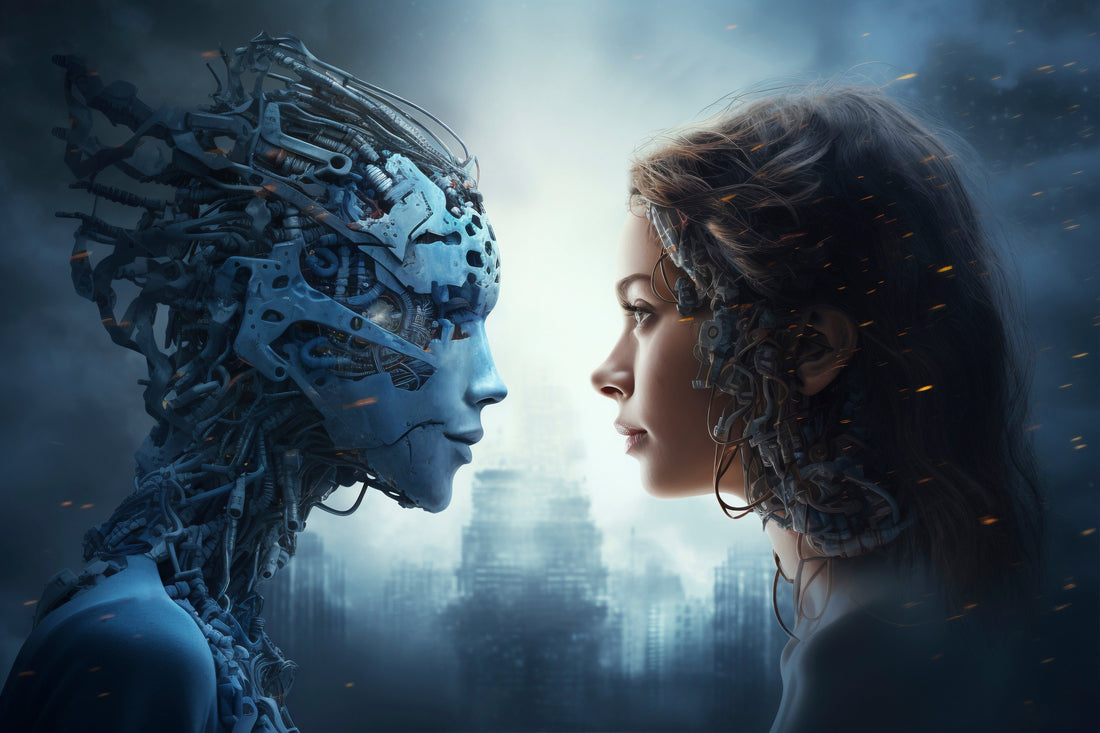
Is the Human Touch Becoming Obsolete?
Share
As AI continues to push the boundaries of what technology can achieve, its impact on creative fields like writing has become a topic of intense discussion. Tools like AI writing software, AI text generators, and AI content generators are increasingly capable of producing content that is grammatically correct, coherent, and tailored to specific needs. This has led many to wonder whether the human touch in writing is gradually becoming obsolete. While these tools bring efficiency and scalability to content creation, they also raise concerns about creativity, originality, and emotional connection.
The Emergence of AI Writing Tools
AI writing tools, particularly AI text generators, rely on advanced algorithms to analyze vast amounts of data and produce text. These tools can mimic human language patterns, allowing them to create everything from simple product descriptions to detailed articles. The development of these tools has been fueled by advancements in NLP and machine learning. AI content generators are now so sophisticated that their outputs can often pass as human-written, making them a popular choice for businesses seeking quick and cost-effective solutions for their content needs.
The growing adoption of AI writing tools is evident across industries such as marketing, journalism, and e-commerce. Companies use them to generate bulk content, automate responses, and even create personalized customer interactions. For many, the appeal lies in their ability to save time and reduce costs. However, this convenience comes with its own set of challenges, particularly when it comes to preserving authenticity and originality in writing.
The Benefits of AI-Generated Content
One of the primary advantages of AI writing tools is their ability to produce content at remarkable speed. A task that might take a human writer hours can be completed by an AI text generator in minutes. This efficiency is invaluable for businesses that require large volumes of content on a regular basis, such as blogs, newsletters, or social media posts.
Cost-effectiveness is another significant benefit. By automating the content creation process, companies can reduce the need for human writers, thereby lowering expenses. AI writing tools also provide consistency, ensuring that the tone and style of the content remain uniform across all outputs. For brands that prioritize maintaining a cohesive voice, this is a crucial feature.
Moreover, AI content generators can analyze data and trends to produce targeted content. For instance, they can create product descriptions optimized for search engines or generate marketing copy designed to engage specific demographics. This level of precision makes them an attractive tool for businesses aiming to enhance their digital presence.
The Limitations of AI in Writing
Despite their many advantages, AI writing tools have significant limitations. One of the most notable is their inability to create truly original and creative content. While AI can mimic human writing, it lacks the imaginative spark and emotional depth that come from personal experience and intuition. This makes AI-generated content less engaging and less likely to resonate with readers on a deeper level.
Another concern is the ethical and legal implications of using AI text generators. Questions about authorship and intellectual property remain unresolved. If a piece of content is generated by AI, who owns it? Additionally, there is the risk of AI being used to spread misinformation or create deceptive content, which could undermine trust in digital platforms.
AI also struggles with nuance. It relies on patterns in existing data, which means it may produce content that is overly generic or biased. While it can simulate understanding, it cannot truly grasp the complexities of human emotions or cultural contexts. This can lead to content that feels impersonal or disconnected from its intended audience.
Why the Human Touch Matters
The human touch in writing is irreplaceable because it brings authenticity, emotional connection, and creativity. Human writers draw from their personal experiences and cultural understanding to craft content that speaks to readers on a deeper level. This ability to connect emotionally is something AI simply cannot replicate.
Critical thinking is another area where humans excel. Unlike AI, which relies on existing data, human writers can analyze complex issues, consider multiple perspectives, and present nuanced arguments. This is particularly important for content that deals with sensitive or intricate topics.
Storytelling is a fundamental aspect of effective writing, and it is one of the greatest strengths of human writers. A compelling narrative has the power to inspire, persuade, and entertain. While AI can generate coherent text, it lacks the ability to weave a story that captures the imagination or stirs emotions.
Humans and AI Working Together
Rather than viewing AI as a replacement for human writers, it can be seen as a tool to enhance their capabilities. AI writing tools can assist with generating ideas, organizing information, or drafting initial versions of content. This allows human writers to focus on adding depth, creativity, and personal touches to their work.
For example, an AI text generator can quickly create a draft of a blog post, which a human writer can then refine and personalize. This collaborative approach not only saves time but also ensures that the final output retains the authenticity and emotional resonance that only a human can provide.
AI can also help streamline routine tasks, such as data analysis or generating standardized reports. By automating these processes, writers are freed up to tackle more complex and creative projects. This symbiotic relationship between humans and AI has the potential to revolutionize the way we approach content creation.
Conclusion
While AI writing tools have undoubtedly transformed the content creation landscape, they are far from rendering the human touch obsolete. These tools excel in efficiency, scalability, and consistency, but they cannot replicate the authenticity, creativity, and emotional connection that human writers bring to their work. The future of writing lies in a collaborative model where AI and humans complement each other's strengths. By embracing this partnership, we can create content that is not only efficient and scalable but also rich, engaging, and deeply human.
